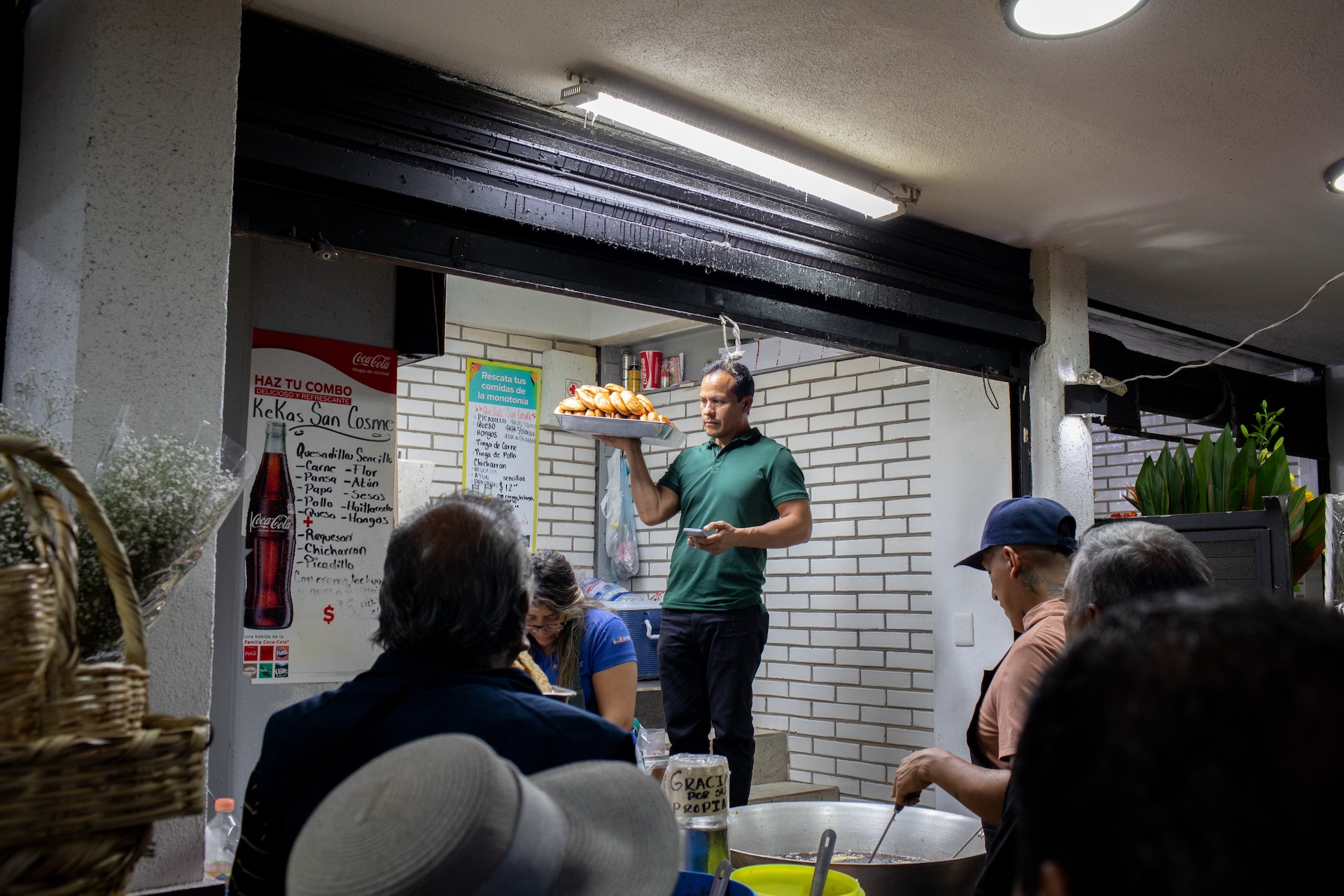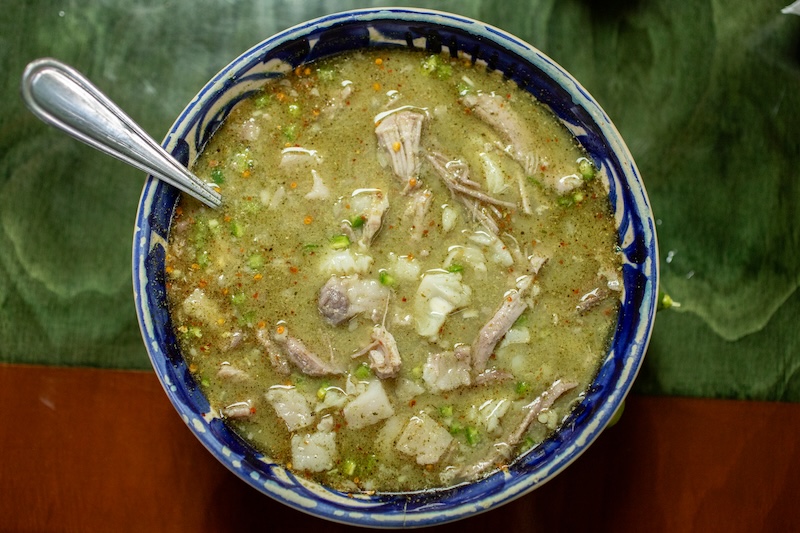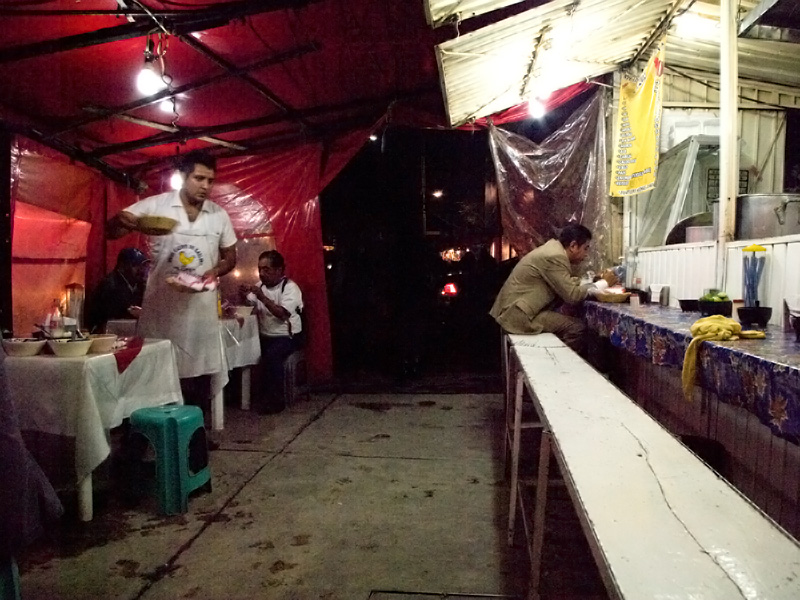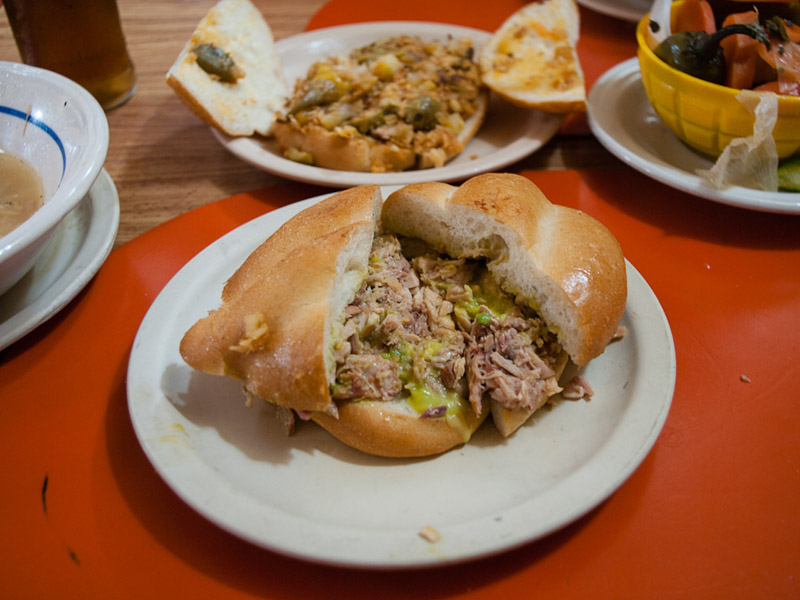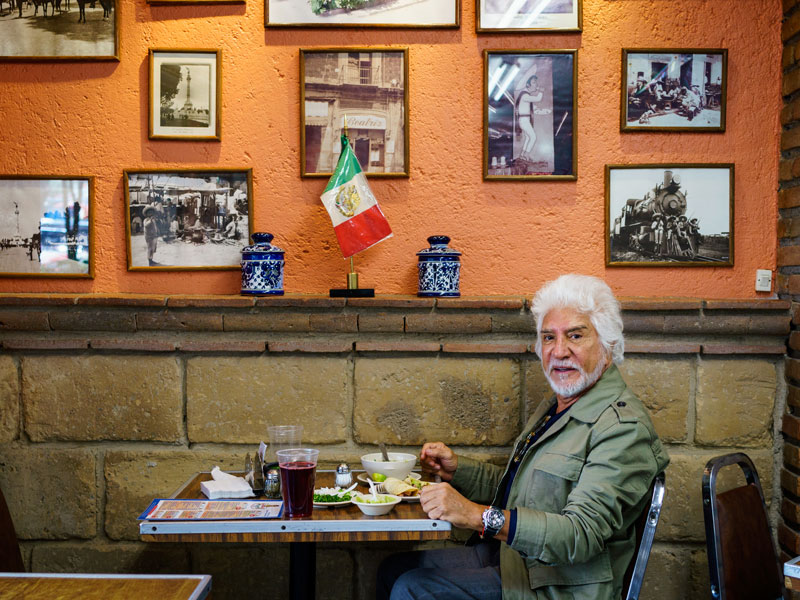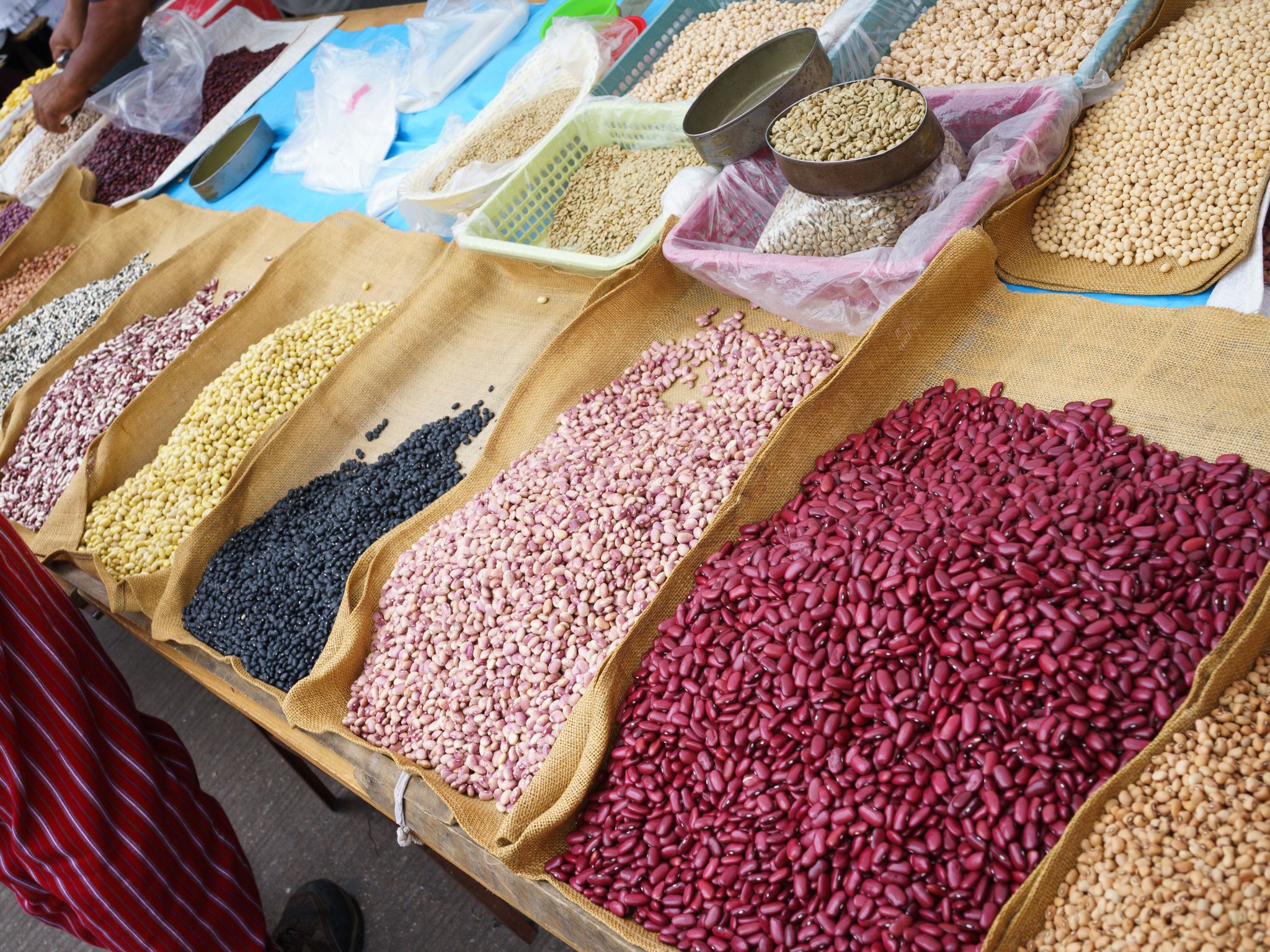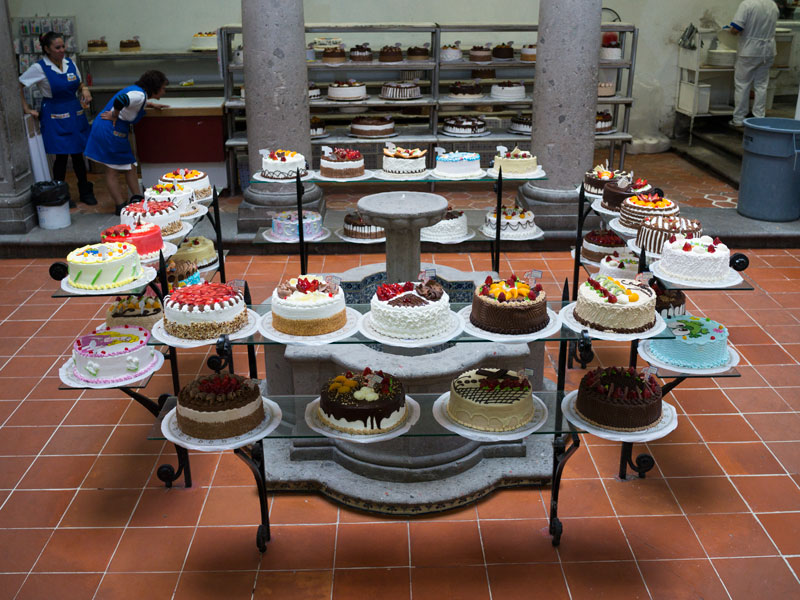We can't find the internet
Attempting to reconnect
Something went wrong!
Hang in there while we get back on track
Search results for "Ben Herrera"
Mexico City
Quekas San Cosme: Reinventing the Quesadilla
One of the staples of Mexican cuisine (and of bar menus everywhere), the quesadilla can be found on almost every street corner and in every neighborhood market in Mexico City. Those served at Mercado San Cosme in Colonia San Rafael, however, redefine the quesadilla. Indeed, while this neighborhood market is far from being the city’s largest or most famous, it’s worth visiting just for a chance to eat at Quekas, an eatery housed in the market that makes some of the best quesadillas we’ve had in the city.
Read moreMexico City
El Pozole de Moctezuma: Soup of the Gods
Pozole, like the tortilla, is one of those ancient dishes that seem to be embedded in Mexicans’ DNA, serving as a culinary link to the ancestral past. A type of soup or stew that was a ceremonial dish in pre-Hispanic Mexico, pozole has yet to be widely commercialized, offered mainly in pozolerías, small restaurants that specialize in serving up the dish and little else.
Read moreMexico City
Caldos de Gallina Luis: The Hen House
Caldos de Gallina Luis – which a friend had been raving about to us for months before we finally made it there – is essentially a street food stand that has been trussed up to look more like a sidewalk café. Just a short walk from the Insurgentes metro stop, the venue is located on a side street next to a parking lot and opposite a sex shop, the glowing neon of the shop’s sign casting its pink light over pedestrians walking by.
Read moreMexico City
La Casa del Pavo: Talk Turkey
Editor’s note: Alfonso Cuarón’s film “Roma,” set in Mexico City between 1970 and 1971, is expected to win big at the Oscars this weekend – it’s up for ten awards. To celebrate the movie’s success, we’re republishing our 2013 review of La Casa del Pavo, where the main character, Cleo, goes to have a sandwich with her co-worker on their day off and meet up with their boyfriends. Not only is this spot one of the few from the film that is still in business, it is almost completely unchanged. The bird that holds pride of place at the Thanksgiving table has just as important a role south of the border. Turkey has actually been a fundamental part of Mexican cooking for centuries: The Aztecs had domesticated the fowl before they had even laid eyes on a chicken.
Read moreMexico City
Beatricita: Taco Centenarian
In a town that runs on tacos, tacos de guisado may be the most ubiquitous version of the iconic dish in Mexico City. They can be found almost anywhere in the city, from specialty restaurants to markets, tianguis and street vendors selling them at stalls or even out of the trunk of a car. It may be an obvious point, but what distinguishes some tacos de guisado from others is how well prepared the guisados (home-style cooked meats or vegetables typically displayed and kept warm in earthenware dishes called cazuelas) are – and sometimes those coming out of the back of a car top ones from more “established” places. With so many places to choose from, how to determine who makes the best tacos de guisado in town? One contender we had long heard about is Beatricita, a brick-and-mortar taquería in the Zona Rosa that has quietly been using the same recipes to great acclaim for almost 110 years – certainly strong evidence that its guisados could be some of the best in the city.
Read moreMexico City
Bean Week: Mexico's Mealtime Mainstay
In Mesoamerica, beans have been a pillar of culinary traditions – not to mention civilizations – from time immemorial. Pre-Columbian peoples depended on legumes as their primary source of protein, but they were more than mere sustenance. Beans (along with corn) were some of the most important crops for sale at the local markets because they could be used as currency. Their value was based on the physical appearance of the product (color and size). The Aztecs included beans in the list of tributes that their vassal states had to pay. Bernardino de Sahagún, a Spanish friar, documented the use of beans in the Aztec empire, noting that the native people ate tamales mixed with beans. Storing and administering these crops was critical in order to be prepared for times of shortage.
Read moreMexico City
Tres Leches: The Magic Number
Pastel de tres leches is beloved throughout much of Latin America, and yet its origins remain a mystery. Some people claim that it was first baked in Nicaragua, others that the recipe was first printed on the label of a well-known brand of canned condensed milk in Mexico. Tres leches is usually a sponge cake soaked – as you might have guessed from the name – in a mixture of condensed, evaporated and regular milk, which might be flavored with vanilla, rum and cinnamon. The cake is baked and soaked in the milk mixture while it’s still warm and in the pan. It sits overnight so that the milk and flavorings thoroughly saturate every bite.
Read more